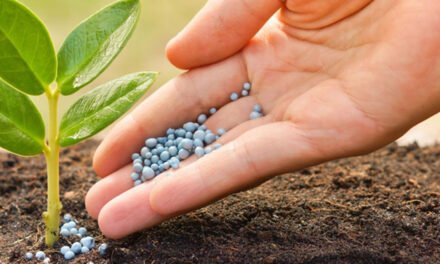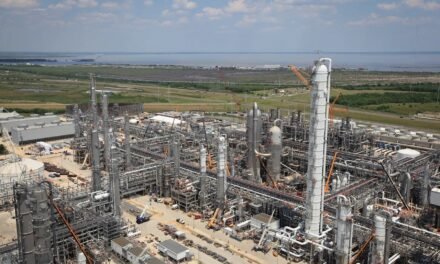The fertilizer industry is innovating to reduce its environmental footprint by enhancing efficiency, adopting sustainable production methods, and integrating advanced technologies. These innovations aim to minimize nutrient loss, decrease greenhouse gas emissions, and promote soil health while maintaining agricultural productivity. Here’s a detailed look at the advancements:
1. Enhanced Efficiency Fertilizers (EEFs)
- Slow-Release Fertilizers:
- Coated fertilizers release nutrients gradually, reducing runoff and leaching.
- Example: Sulfur-coated and polymer-coated fertilizers.
- Controlled-Release Fertilizers:
- Use advanced coatings to synchronize nutrient release with plant uptake, minimizing waste.
- Impact: Reduces nitrogen loss and improves nutrient use efficiency.
- Stabilized Fertilizers:
- Incorporate inhibitors to slow down nitrogen transformations in soil.
- Examples:
- Urease inhibitors like NBPT reduce ammonia volatilization.
- Nitrification inhibitors like DCD reduce nitrous oxide emissions.
2. Sustainable Production Processes
- Green Ammonia:
- Producing ammonia (a key fertilizer component) using green hydrogen from water electrolysis powered by renewable energy.
- Example: Yara’s green ammonia projects aim to decarbonize fertilizer production.
- Carbon Capture and Storage (CCS):
- Capturing CO₂ emissions from fertilizer production plants and storing them underground or reusing them in industrial processes.
- Low-Carbon Technologies:
- Switching from fossil fuels to renewable energy sources for powering fertilizer plants.
3. Precision Agriculture
- Variable Rate Application:
- Sensors and GPS-enabled equipment deliver fertilizers in precise amounts based on soil and crop needs.
- Soil Testing and Mapping:
- Advanced soil analysis identifies nutrient deficiencies, optimizing fertilizer use.
- Decision Support Systems (DSS):
- AI and data analytics provide real-time recommendations for efficient fertilizer application.
4. Bio-Based Fertilizers
- Organic Fertilizers:
- Derived from compost, animal manure, and crop residues to enhance soil organic matter and nutrient cycling.
- Biofertilizers:
- Contain beneficial microorganisms, such as nitrogen-fixing bacteria and mycorrhizal fungi, to improve nutrient availability.
- Examples: Rhizobium-based inoculants for legumes and phosphate-solubilizing bacteria.
- Algae-Based Fertilizers:
- Algae are used as a sustainable source of nutrients, particularly nitrogen and phosphorus.
5. Recycling and Circular Economy
- Nutrient Recovery:
- Technologies recover nitrogen, phosphorus, and potassium (NPK) from agricultural runoff, wastewater, and animal manure.
- Example: Struvite recovery from wastewater for use as a slow-release phosphate fertilizer.
- Use of Industrial By-Products:
- Converting by-products like ash or slag into fertilizers reduces waste and promotes resource efficiency.
6. Innovations in Fertilizer Formulations
- Multi-Nutrient Fertilizers:
- Combine essential nutrients (NPK) with micronutrients to improve crop health and yield.
- Customized Fertilizers:
- Tailored formulations based on specific soil and crop requirements to reduce overuse.
- Nanotechnology:
- Nano-fertilizers enhance nutrient delivery and reduce losses by targeting plant uptake mechanisms.
7. Digital Tools and IoT Integration
- Remote Sensing:
- Drones and satellites monitor crop health and soil conditions, guiding fertilizer application.
- IoT-Enabled Devices:
- Soil sensors provide continuous data on moisture and nutrient levels, enabling precise management.
- Apps and Platforms:
- Digital tools help farmers plan and monitor fertilizer usage, reducing over-application.
8. Water-Efficient Practices
- Fertigation:
- Combining fertilizer application with irrigation ensures nutrients reach the root zone directly, minimizing losses.
- Drip Irrigation:
- Delivers water and fertilizers in small doses, reducing runoff and improving nutrient uptake.
- Buffer Zones:
- Vegetative barriers capture runoff and reduce nutrient loss into water bodies.
9. Renewable Feedstocks
- Biogas Digestate:
- Using digestate from biogas plants as an organic fertilizer rich in nutrients.
- Waste-Derived Fertilizers:
- Fertilizers produced from food waste or other organic waste streams contribute to circular farming.
10. Genetically Engineered Solutions
- Nitrogen-Efficient Crops:
- Developing crops with higher nitrogen-use efficiency to reduce fertilizer requirements.
- Example: Genetically modified rice and wheat varieties that require less nitrogen input.
- Microbial Engineering:
- Engineering soil microbes to enhance nutrient availability and uptake.
11. Regulatory and Policy Support
- Emissions Regulations:
- Policies limiting nitrous oxide emissions encourage adoption of low-impact fertilizers.
- Subsidies for Sustainable Products:
- Governments provide incentives for using enhanced efficiency fertilizers and bio-based alternatives.
- Carbon Credits:
- Farmers adopting low-emission fertilizer practices can earn credits under carbon trading schemes.
12. Education and Awareness
- Farmer Training Programs:
- Educating farmers on best practices for fertilizer application and soil health management.
- Collaborative Platforms:
- Partnerships between governments, NGOs, and private sectors to promote sustainable fertilizer use.
Environmental Benefits
- Reduced Eutrophication:
- Innovations minimize nutrient runoff, preventing harmful algal blooms in water bodies.
- Lower Greenhouse Gas Emissions:
- Stabilized fertilizers and green ammonia production reduce nitrous oxide and CO₂ emissions.
- Improved Soil Health:
- Bio-based fertilizers and organic amendments enhance soil organic matter and microbial diversity.
Future Outlook
- The fertilizer industry is rapidly adopting innovations to align with sustainability goals and global food security needs.
- Advances in precision agriculture, biofertilizers, and renewable feedstocks will continue to transform fertilizer production and application.
- Collaborative efforts between industry stakeholders and governments will accelerate the transition to low-impact fertilizer practices.
Conclusion
Innovations in the fertilizer industry are significantly reducing its environmental footprint while improving efficiency and supporting sustainable agriculture. By integrating advanced technologies, bio-based solutions, and precision farming practices, the industry is paving the way for a greener future that meets the dual goals of productivity and environmental stewardship.
Hashtags
#FertilizerInnovation #SustainableFertilizers #EcoFriendlyFertilizers #GreenFertilizers #FarmingWithInnovation #EnvironmentalSustainability #SustainableAgriculture #ClimateSmartFarming #ReduceFertilizerImpact #EcoFarmingPractices #TechnologyandAdvancedPractices #SmartFertilizers #AgriTechSolutions #PrecisionFarming #EnhancedEfficiencyFertilizers #NitrogenandNutrientManagement #NitrogenEfficiency #NutrientManagement #EfficientFertilization #SmartNutrients #SoilandEcosystemHealth #HealthySoil #SoilSustainability #EcoFarmingSolutions #SoilHealthInnovation

















